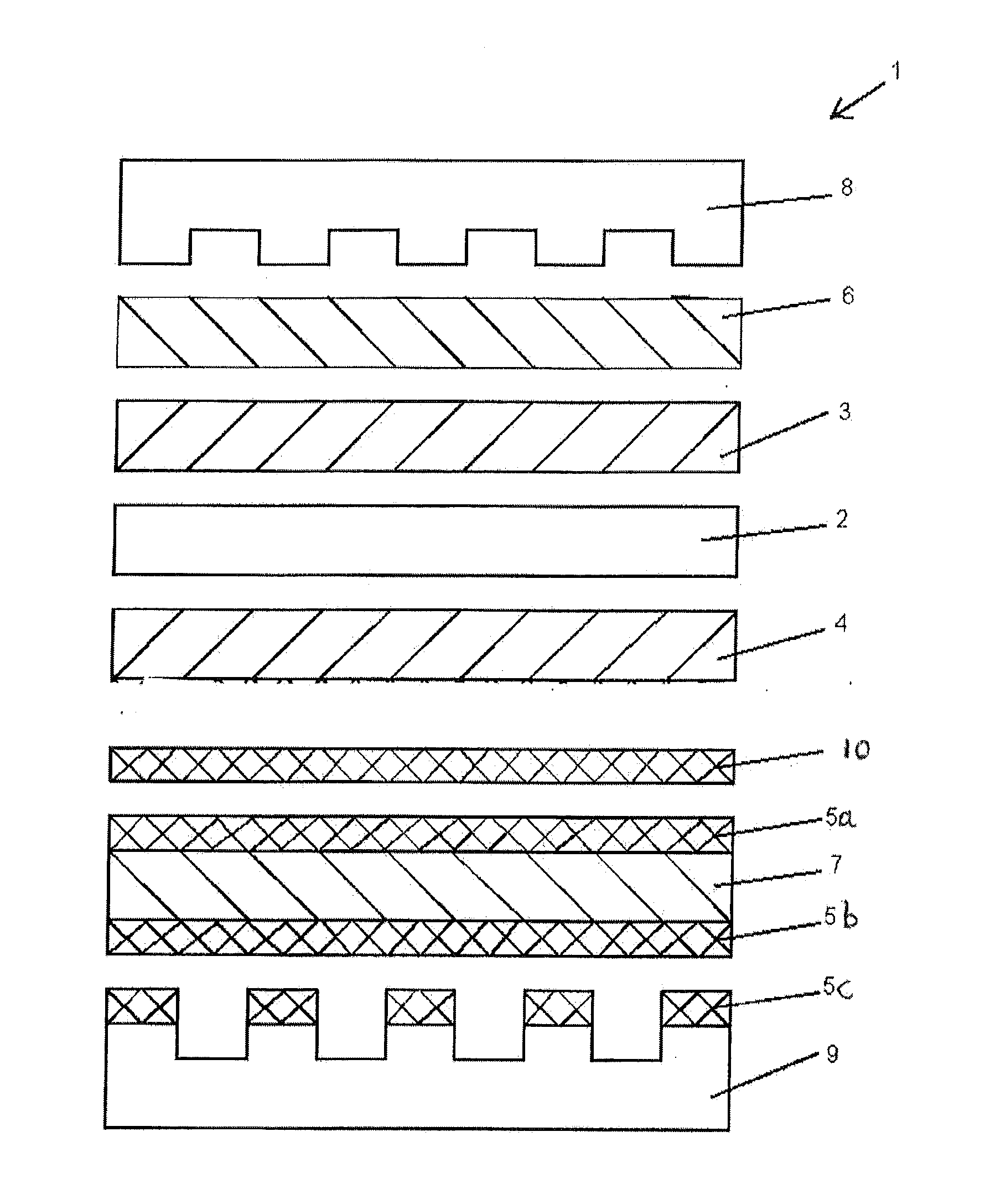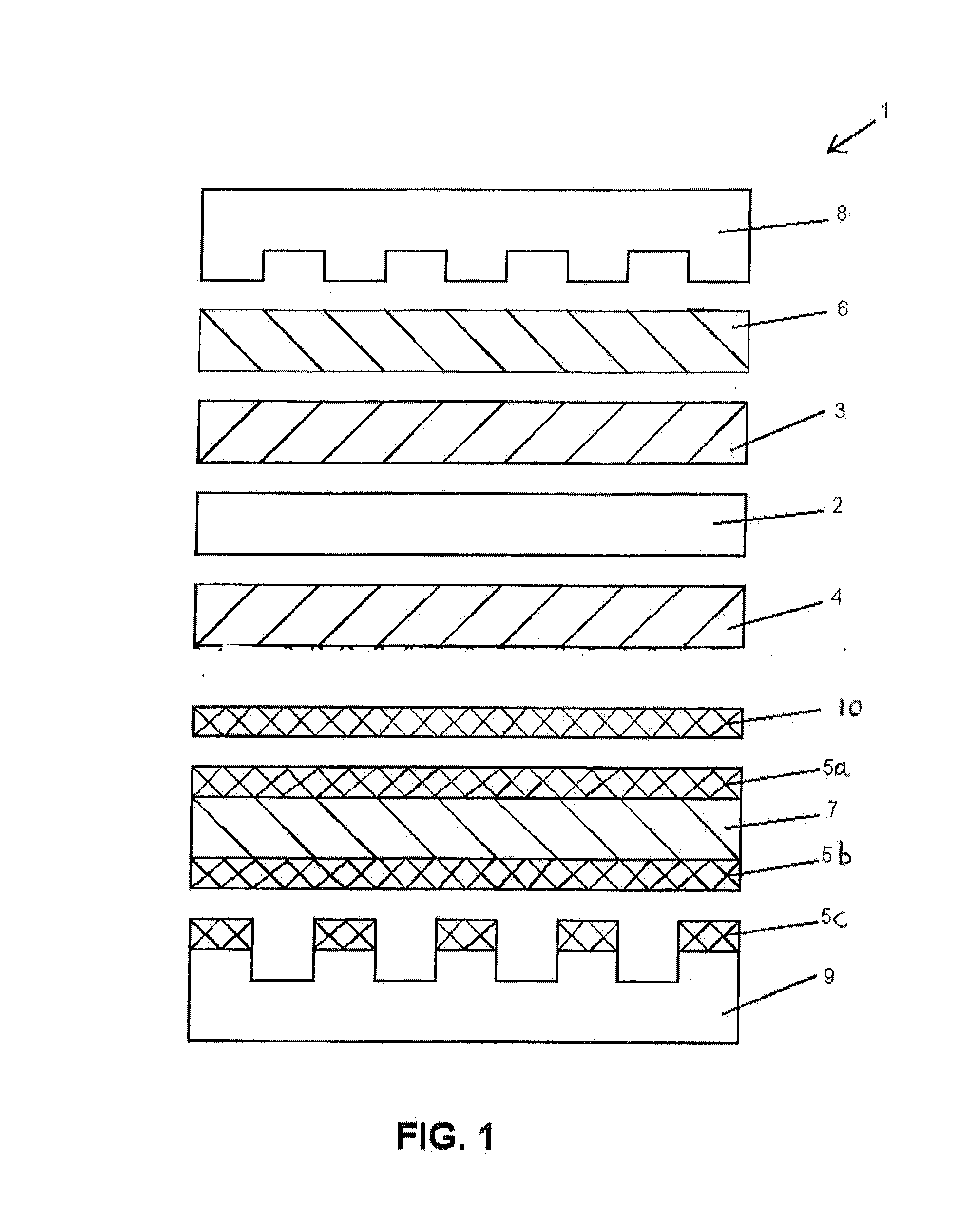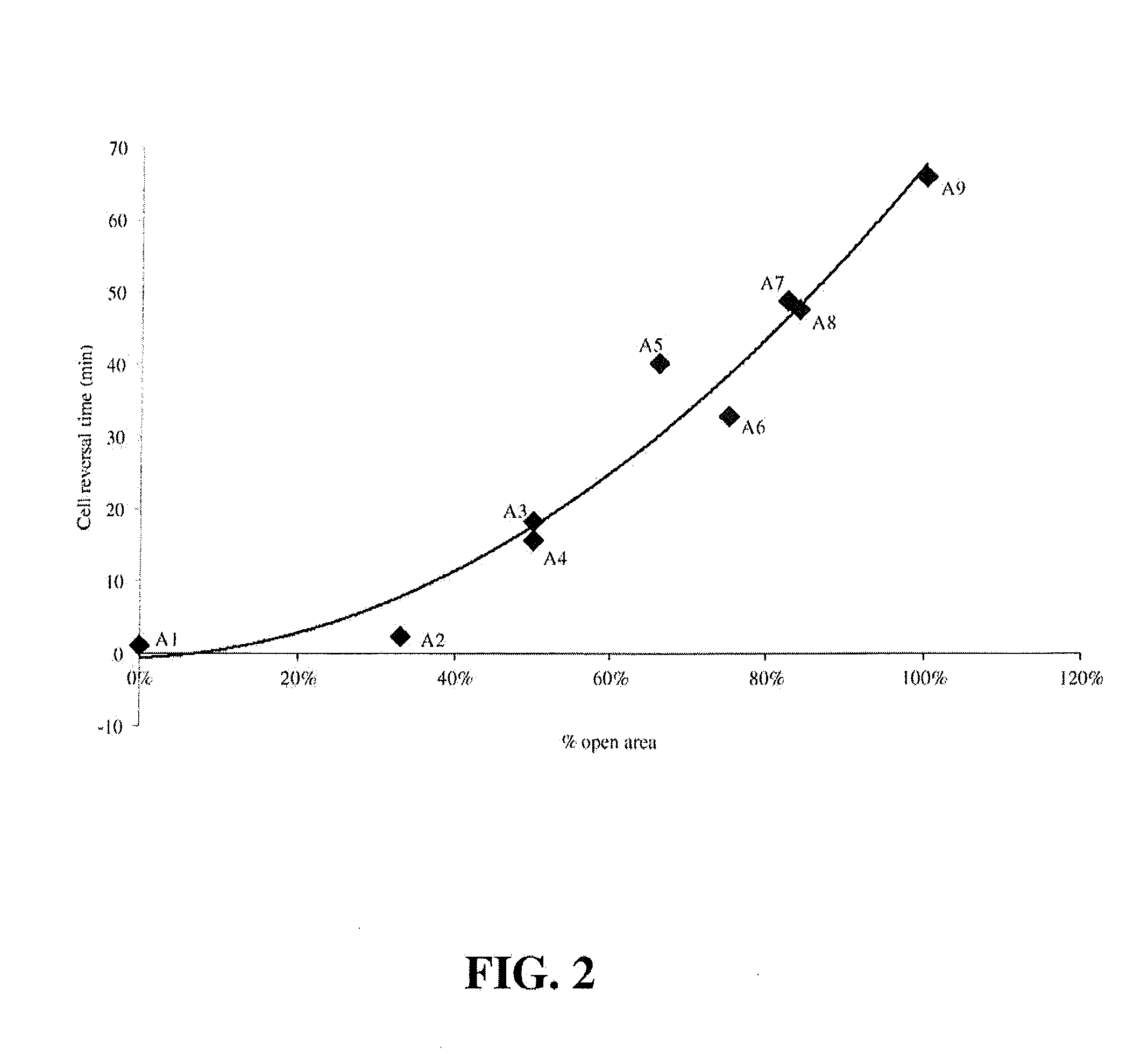Voltage reversal tolerant fuel cell with selectively conducting anode
a voltage reversal tolerance, fuel cell technology, applied in the direction of fuel cell details, cell components, electrochemical generators, etc., can solve the problems of unacceptably high degradation rate of performance in solid polymer electrolyte fuel cells, adversely affecting performance, corrosion enhancement events, etc., to improve voltage reversal tolerance, improve startup/shutdown durability, effect of improving performan
- Summary
- Abstract
- Description
- Claims
- Application Information
AI Technical Summary
Benefits of technology
Problems solved by technology
Method used
Image
Examples
examples
[0030]Various experimental fuel cells were prepared with selectively conducting layers (for purposes of startup and shutdown durability) and were then subjected to voltage reversal tolerance testing and performance testing to compare these characteristics. The series included several comparative fuel cells, including a series in which the selectively conducting layer only partially covered the gas diffusion layer, as well as fuel cells comprising different combinations of selectively conducting layers and carbon sublayers.
[0031]The cells all comprised catalyst coated membrane electrolytes (CCMs) sandwiched between anode and cathode gas diffusion layers (GDLs) comprising commercial carbon fibre paper from Freudenberg. (In many cases, complete GDLs were obtained commercially from Freudenberg.) The CCMs all had membrane electrolytes made of 18 micrometer thick perfluorosulfonic acid ionomer which had been coated on opposite sides with the desired anode and cathode catalyst layers. The ...
PUM
| Property | Measurement | Unit |
|---|---|---|
| fuel cell voltage | aaaaa | aaaaa |
| thickness | aaaaa | aaaaa |
| thickness | aaaaa | aaaaa |
Abstract
Description
Claims
Application Information
 Login to View More
Login to View More - R&D
- Intellectual Property
- Life Sciences
- Materials
- Tech Scout
- Unparalleled Data Quality
- Higher Quality Content
- 60% Fewer Hallucinations
Browse by: Latest US Patents, China's latest patents, Technical Efficacy Thesaurus, Application Domain, Technology Topic, Popular Technical Reports.
© 2025 PatSnap. All rights reserved.Legal|Privacy policy|Modern Slavery Act Transparency Statement|Sitemap|About US| Contact US: help@patsnap.com



